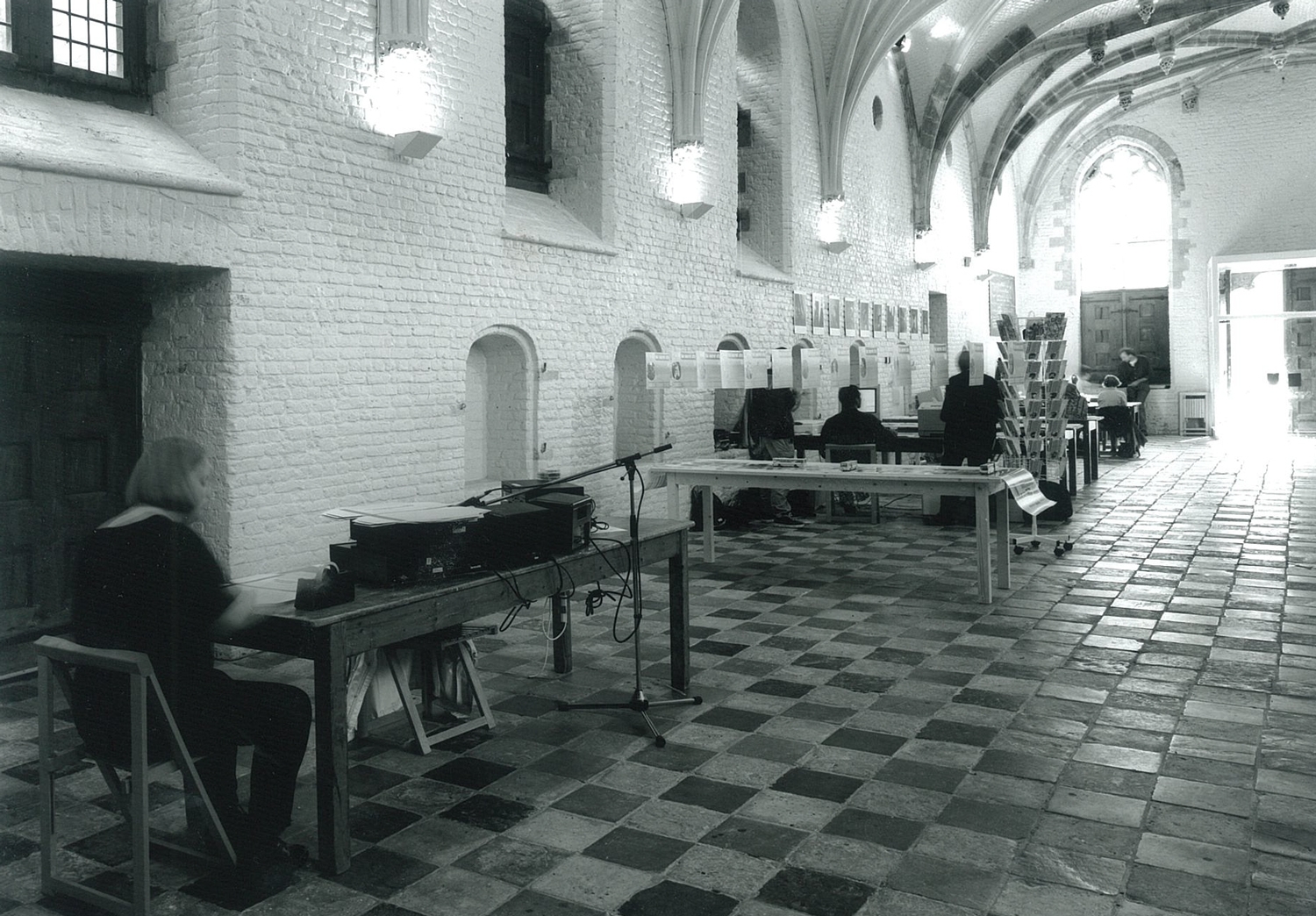De Verborgen Stad
Group exhibition
6 September – 19 October 1997
Vleeshal (Map)
Curators: Jeanne van Heeswijk, Maria-Rosa Boezem, Lex ter Braak

'The Hidden City' was a project about Middelburg’s backdoor alleys. This project aimed to bring the back of the city to the front stage.
The hidden city is the name for the little streets, narrow alleys and old firepaths that are interwoven between the main streets of Middelburg like an invisible web. The majority of these streets have kept silent for a long time. By mapping them up and connecting them by way of a route, The Hidden City intended to make them visible in all their diversity.
Twenty-three commentators - including artists, critics, writers and philosophers - were asked to expose the hidden city, in all its layers, from their own discipline. The visitor was also invited to do this.
Some gave their vision to the hidden city in the web of the backstreets themselves. Róza El-Hassan, with her mobile street furniture and mobile garden, explored the boundaries between public, private and hidden spaces. On the parking lot of Sinke Komejan (Bellinkstraat) sound recordings that Marinus Boezem made in 1979 of the sounds of the sparrows settling in the parking lot could be heard.
Other commentators showed their contribution in De Vleeshal. Bas Czerwinski presented pictures he made in 1997 of the back ends of Middelburg. In a several-meters-long drawing, Christoph Fink imagined his walks to, through and from the hidden city. Made by Calin Dan, plaster casts of places from the hidden city were scattered through De Vleeshal.